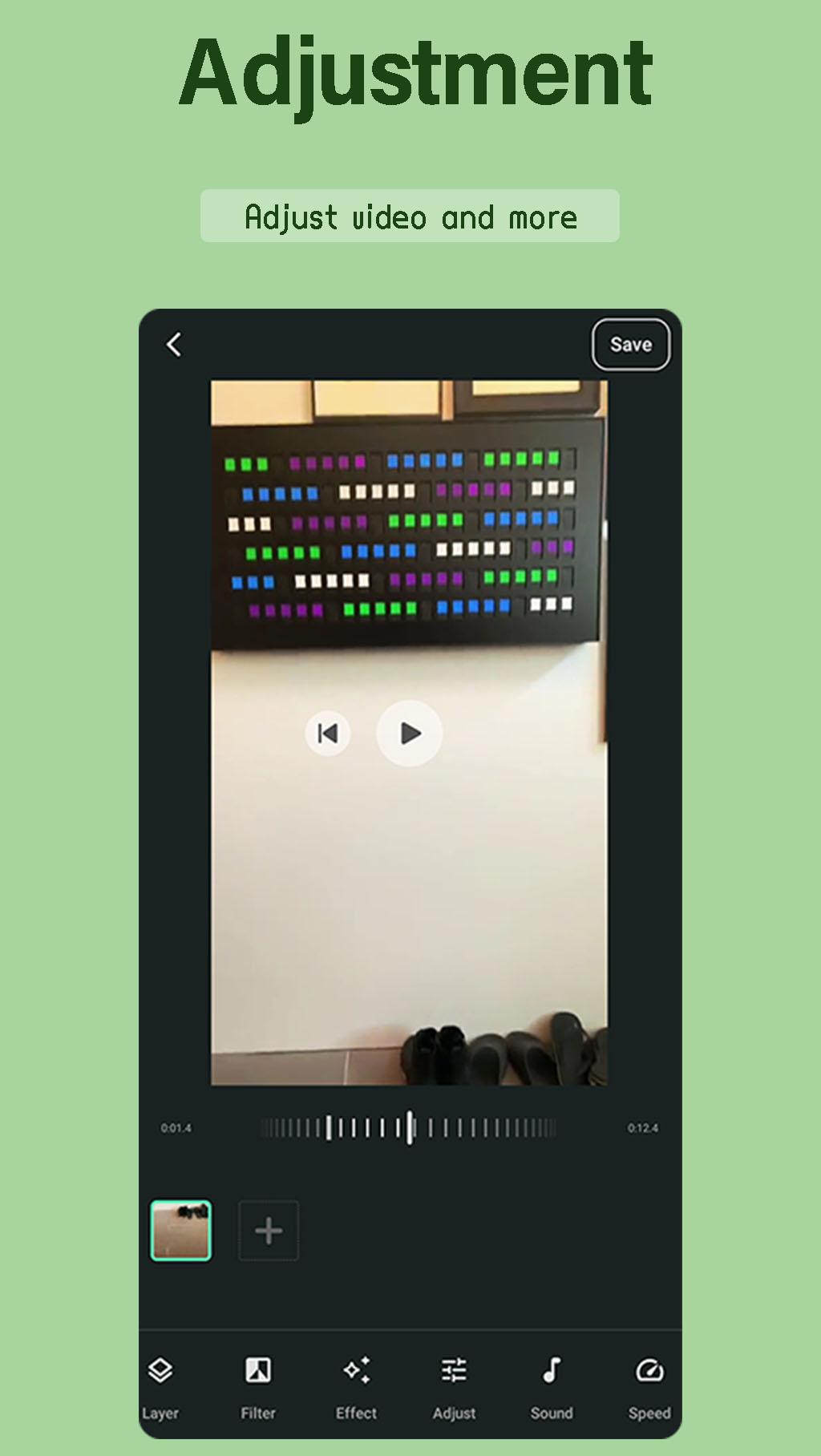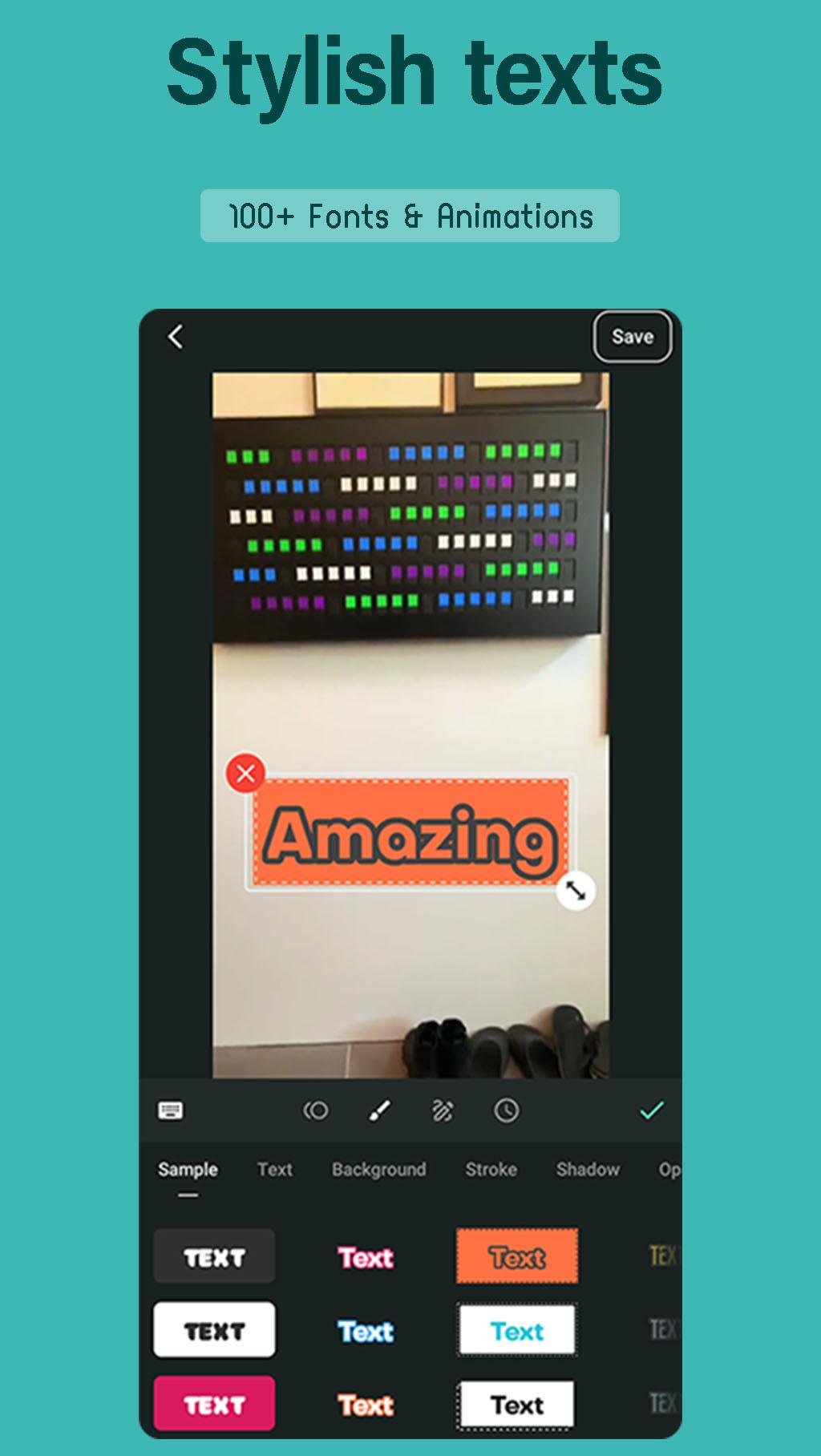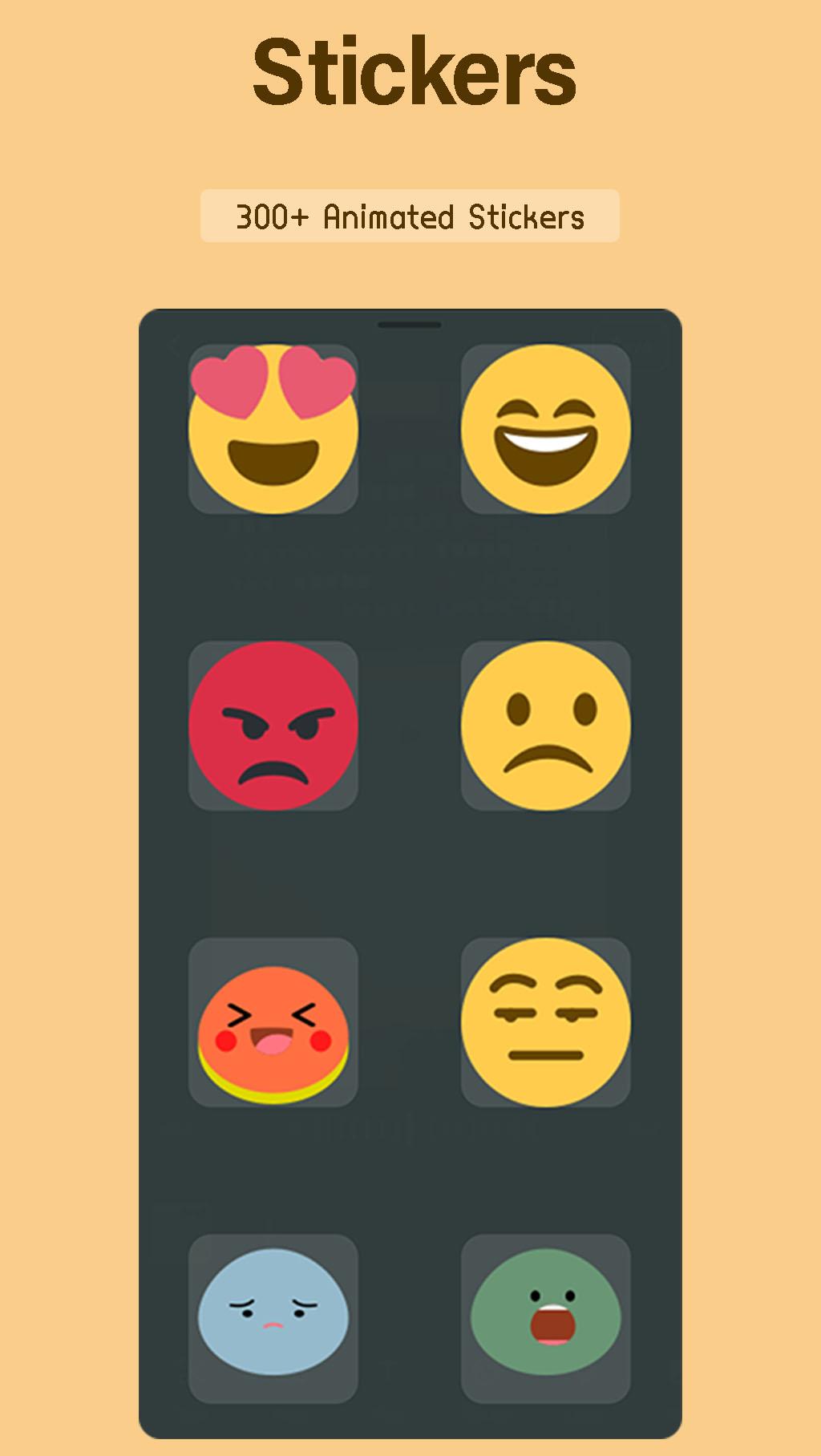Easy-to-use video editor & maker. Add music, animated sticker and text to video
Easy-to-use video editor & maker
VideoLite lets you trim video, crop video, add text and stickers, add music, combine pictures with cool transitions to make a video, merge videos into one, adjust ratio, adjust speed, apply voice effect, extract video frame and save it as image. VideoLite helps you to become an influencer on Instagram, TikTok, WhatsApp, and Facebook.
Features:
+ Add effects, filters and adjust video brightness, contrast, warmness, saturation, colors, etc.
+ Powerful video maker with photos
+ Add voice-over or music to video
+ Write animated text with different fonts and styles, sticker and emoji on video
+ Adjust aspect ratio, background, speed of video
+ Make slideshows with photos and transitions
+ Extract audio from video and save it as MP3
+ Combine video clips to make one video
+ Export videos/movie in 720p and Full HD with 24,30, or 60 FPS
+ Extract photos from video and share them
Disclaimer:
VideoLite is not associated, affiliated, sponsored, endorsed by, or in any way officially connected with Instagram, TikTok, WhatsApp, and Facebook.
What's New in the Latest Version 1.18.0
Last updated on Jul 9, 2024
Improve user experience
VideoLite is a hypothetical video game, and as such, there is no established lore, gameplay mechanics, or history to summarize. Since no such game exists, the following paragraphs will explore potential concepts and features that a game called VideoLite might encompass, drawing inspiration from existing game genres and trends.Imagine VideoLite as a sandbox creation game centered around manipulating light and color. Players could sculpt and mold beams of light into dynamic structures, crafting intricate environments and interactive puzzles. The core gameplay would revolve around understanding the properties of light, such as reflection, refraction, and diffraction. Players could experiment with mirrors, lenses, prisms, and other optical devices to bend and shape light into desired forms.
The game world could be a vast, open space, initially shrouded in darkness. Players would progressively illuminate the world by strategically placing light sources and manipulating their beams. Discovering new light-based tools and technologies would unlock further creative possibilities. Players could even craft their own light-emitting objects, customizing their color, intensity, and behavior.
VideoLite could also incorporate a physics engine that simulates realistic light interactions. This would allow for complex light shows and dynamic lighting effects, adding another layer of depth to the gameplay. Players could create dazzling visual displays by manipulating light beams in real-time, perhaps even synchronizing them with music or other in-game events.
A robust sharing system would allow players to showcase their creations and collaborate with others. Imagine a community-driven hub where players can explore and remix each other's light-based artwork. This collaborative aspect could foster a thriving ecosystem of creativity and innovation within the game.
Expanding on the creative aspect, VideoLite could feature a story mode where players use their light manipulation skills to solve puzzles and progress through a narrative. Perhaps the story revolves around restoring light to a world consumed by darkness, with each puzzle representing a step towards reclaiming lost illumination.
The game's aesthetic could be minimalist and elegant, emphasizing the beauty and purity of light. A calming soundtrack would complement the visuals, creating a serene and immersive experience. The user interface would be intuitive and unobtrusive, allowing players to focus on their creative endeavors.
Multiplayer functionality could further enhance the gameplay experience. Players could collaborate on large-scale light installations, compete in light-based challenges, or simply explore each other's creations in a shared virtual space. Imagine collaborative light shows and interactive light sculptures built by multiple players working together.
VideoLite could also incorporate educational elements, teaching players about the science of light and optics in an engaging and interactive way. Players could learn about different wavelengths, color mixing, and other optical phenomena through hands-on experimentation within the game world.
The game's progression system could be tied to the player's mastery of light manipulation techniques. As players unlock new tools and abilities, they could tackle increasingly complex challenges and create more elaborate light-based structures. This would provide a sense of accomplishment and encourage players to continue exploring the game's creative possibilities.
VideoLite could even extend beyond traditional gaming platforms. Imagine an augmented reality version where players can manipulate virtual light in their real-world environment. This would blur the lines between the virtual and physical worlds, creating a truly unique and immersive experience.
Ultimately, VideoLite has the potential to be a captivating and innovative game that celebrates the beauty and power of light. By combining creative gameplay, realistic physics, and a strong community focus, VideoLite could offer a truly unique and enriching experience for players of all ages. While this is a hypothetical exploration, the core concept of manipulating light holds immense potential for a compelling and engaging video game.
Easy-to-use video editor & maker. Add music, animated sticker and text to video
Easy-to-use video editor & maker
VideoLite lets you trim video, crop video, add text and stickers, add music, combine pictures with cool transitions to make a video, merge videos into one, adjust ratio, adjust speed, apply voice effect, extract video frame and save it as image. VideoLite helps you to become an influencer on Instagram, TikTok, WhatsApp, and Facebook.
Features:
+ Add effects, filters and adjust video brightness, contrast, warmness, saturation, colors, etc.
+ Powerful video maker with photos
+ Add voice-over or music to video
+ Write animated text with different fonts and styles, sticker and emoji on video
+ Adjust aspect ratio, background, speed of video
+ Make slideshows with photos and transitions
+ Extract audio from video and save it as MP3
+ Combine video clips to make one video
+ Export videos/movie in 720p and Full HD with 24,30, or 60 FPS
+ Extract photos from video and share them
Disclaimer:
VideoLite is not associated, affiliated, sponsored, endorsed by, or in any way officially connected with Instagram, TikTok, WhatsApp, and Facebook.
What's New in the Latest Version 1.18.0
Last updated on Jul 9, 2024
Improve user experience
VideoLite is a hypothetical video game, and as such, there is no established lore, gameplay mechanics, or history to summarize. Since no such game exists, the following paragraphs will explore potential concepts and features that a game called VideoLite might encompass, drawing inspiration from existing game genres and trends.Imagine VideoLite as a sandbox creation game centered around manipulating light and color. Players could sculpt and mold beams of light into dynamic structures, crafting intricate environments and interactive puzzles. The core gameplay would revolve around understanding the properties of light, such as reflection, refraction, and diffraction. Players could experiment with mirrors, lenses, prisms, and other optical devices to bend and shape light into desired forms.
The game world could be a vast, open space, initially shrouded in darkness. Players would progressively illuminate the world by strategically placing light sources and manipulating their beams. Discovering new light-based tools and technologies would unlock further creative possibilities. Players could even craft their own light-emitting objects, customizing their color, intensity, and behavior.
VideoLite could also incorporate a physics engine that simulates realistic light interactions. This would allow for complex light shows and dynamic lighting effects, adding another layer of depth to the gameplay. Players could create dazzling visual displays by manipulating light beams in real-time, perhaps even synchronizing them with music or other in-game events.
A robust sharing system would allow players to showcase their creations and collaborate with others. Imagine a community-driven hub where players can explore and remix each other's light-based artwork. This collaborative aspect could foster a thriving ecosystem of creativity and innovation within the game.
Expanding on the creative aspect, VideoLite could feature a story mode where players use their light manipulation skills to solve puzzles and progress through a narrative. Perhaps the story revolves around restoring light to a world consumed by darkness, with each puzzle representing a step towards reclaiming lost illumination.
The game's aesthetic could be minimalist and elegant, emphasizing the beauty and purity of light. A calming soundtrack would complement the visuals, creating a serene and immersive experience. The user interface would be intuitive and unobtrusive, allowing players to focus on their creative endeavors.
Multiplayer functionality could further enhance the gameplay experience. Players could collaborate on large-scale light installations, compete in light-based challenges, or simply explore each other's creations in a shared virtual space. Imagine collaborative light shows and interactive light sculptures built by multiple players working together.
VideoLite could also incorporate educational elements, teaching players about the science of light and optics in an engaging and interactive way. Players could learn about different wavelengths, color mixing, and other optical phenomena through hands-on experimentation within the game world.
The game's progression system could be tied to the player's mastery of light manipulation techniques. As players unlock new tools and abilities, they could tackle increasingly complex challenges and create more elaborate light-based structures. This would provide a sense of accomplishment and encourage players to continue exploring the game's creative possibilities.
VideoLite could even extend beyond traditional gaming platforms. Imagine an augmented reality version where players can manipulate virtual light in their real-world environment. This would blur the lines between the virtual and physical worlds, creating a truly unique and immersive experience.
Ultimately, VideoLite has the potential to be a captivating and innovative game that celebrates the beauty and power of light. By combining creative gameplay, realistic physics, and a strong community focus, VideoLite could offer a truly unique and enriching experience for players of all ages. While this is a hypothetical exploration, the core concept of manipulating light holds immense potential for a compelling and engaging video game.












